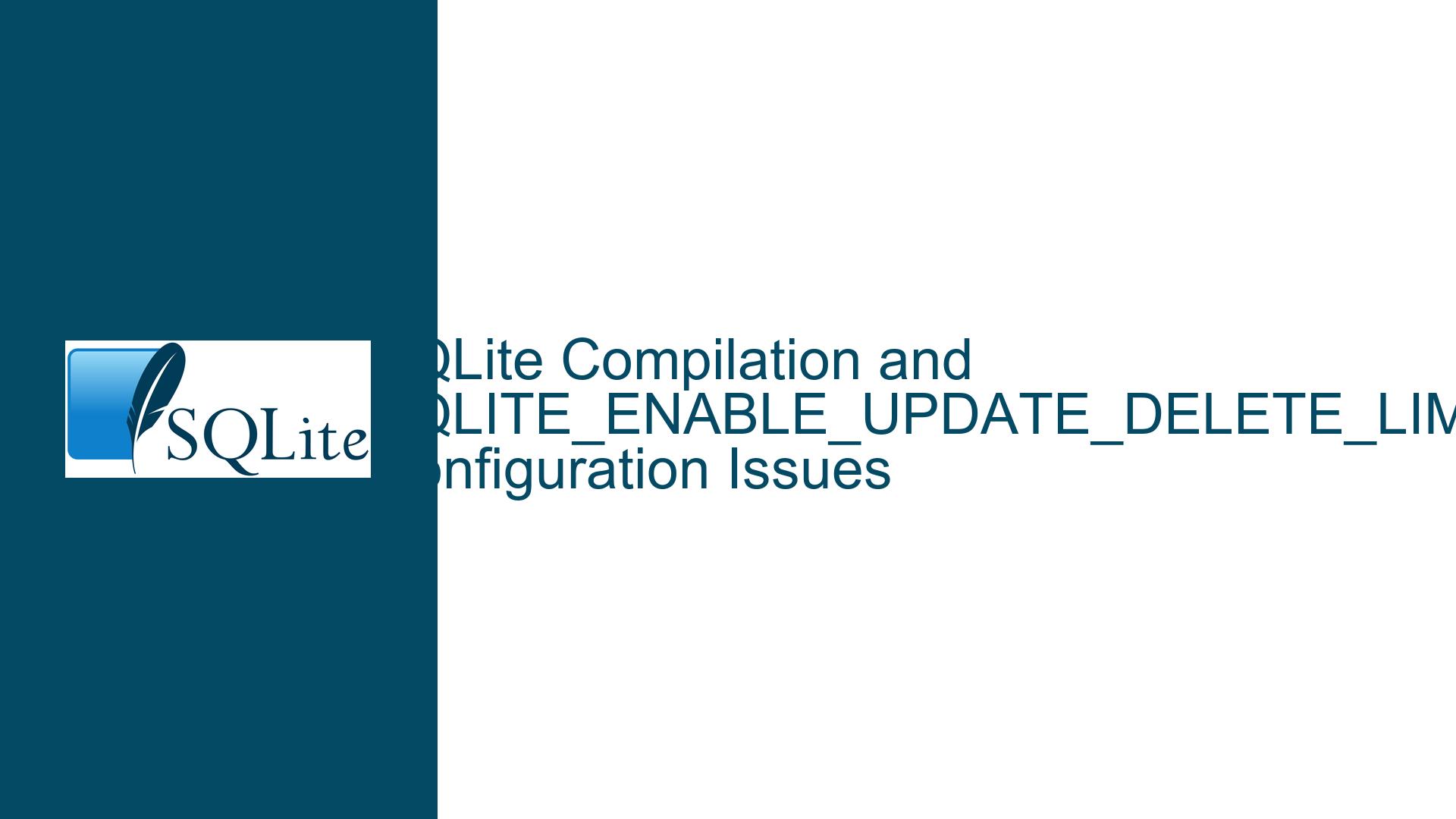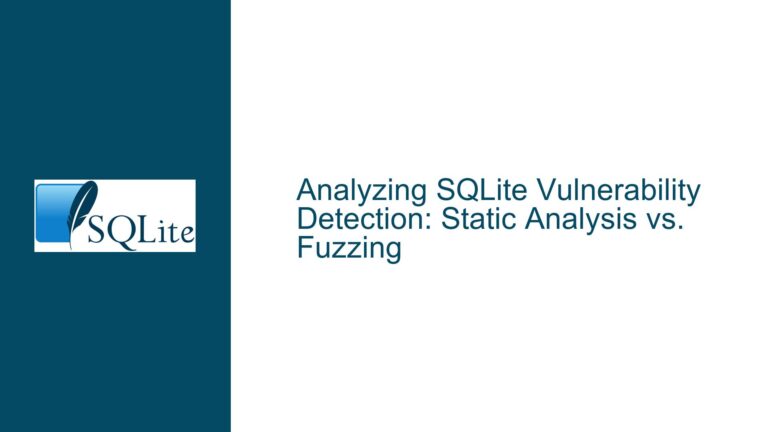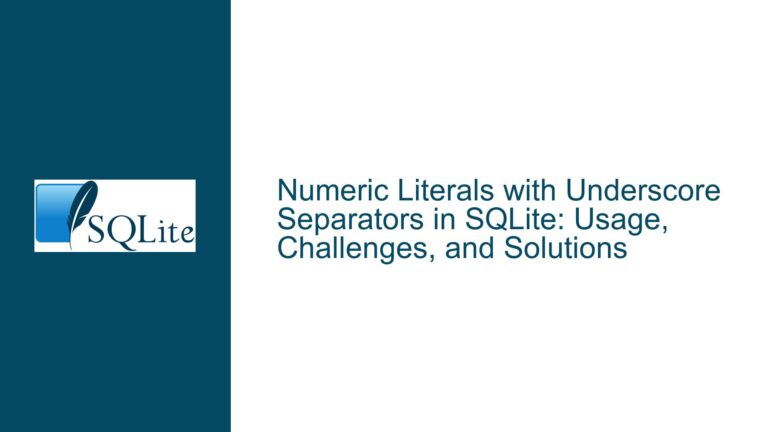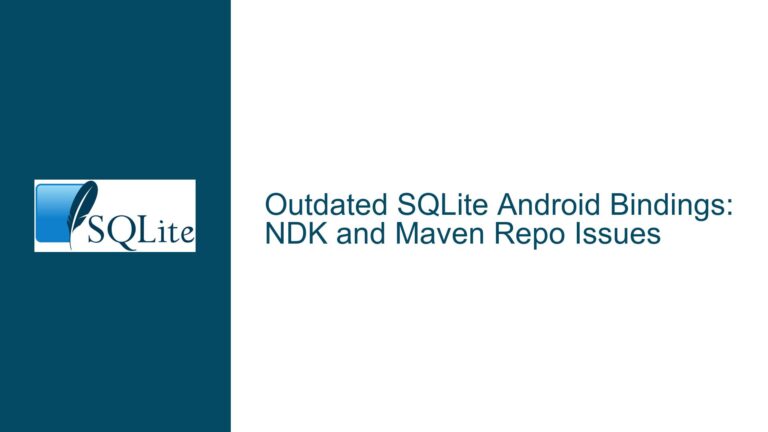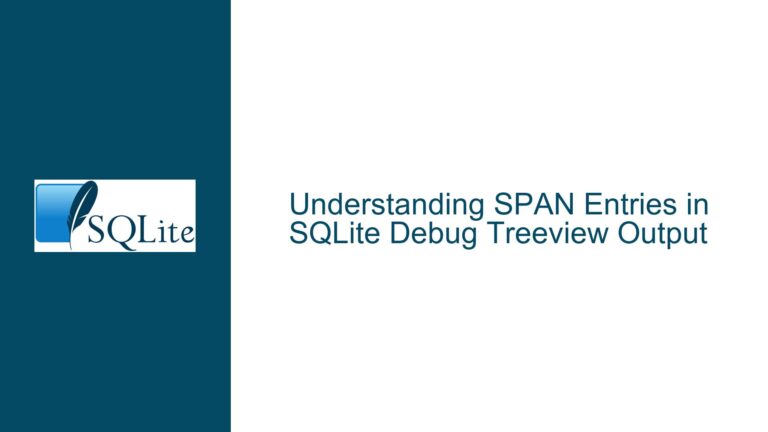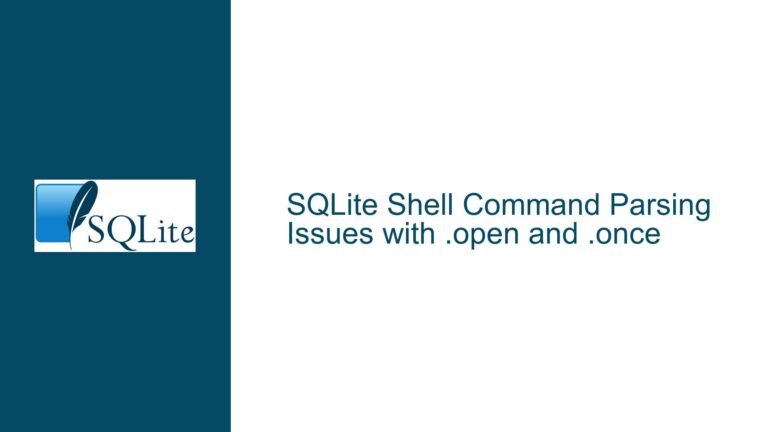SQLite Compilation and SQLITE_ENABLE_UPDATE_DELETE_LIMIT Configuration Issues
SQLite Compilation and SQLITE_ENABLE_UPDATE_DELETE_LIMIT Configuration Issues
The SQLITE_ENABLE_UPDATE_DELETE_LIMIT option in SQLite allows the use of the ORDER BY and LIMIT clauses in UPDATE and DELETE statements, which can be particularly useful for controlling the scope of these operations. However, enabling this feature requires careful attention to the compilation process, especially when using pre-built amalgamations or third-party extensions like SQLite Encryption Extension (SEE). Misconfigurations can lead to syntax errors, compilation failures, or runtime inconsistencies.
The core issue revolves around the correct compilation flags and their consistency during both the generation and compilation of the SQLite amalgamation. Specifically, the SQLITE_ENABLE_UPDATE_DELETE_LIMIT flag must be consistently applied, and its interaction with other compilation options, such as SQLITE_UDL_CAPABLE_PARSER, must be understood to avoid errors.
Inconsistent Compilation Flags Leading to Syntax Errors
The primary cause of the issue lies in the inconsistent application of compilation flags during the generation and compilation of the SQLite amalgamation. The SQLITE_ENABLE_UPDATE_DELETE_LIMIT flag must be defined both when generating the amalgamation and when compiling it. If this flag is not consistently applied, the resulting binary may lack the necessary functionality, leading to syntax errors when attempting to use ORDER BY and LIMIT clauses in UPDATE and DELETE statements.
Additionally, the introduction of the SQLITE_UDL_CAPABLE_PARSER flag complicates the matter. This flag is internally used to indicate that the parser is capable of handling the ORDER BY and LIMIT clauses in UPDATE and DELETE statements. If the SQLITE_ENABLE_UPDATE_DELETE_LIMIT flag is defined during the generation of the amalgamation but not during compilation, the resulting binary may lack the necessary function declarations, leading to compilation failures.
The issue is further exacerbated when using third-party extensions like SEE, which may distribute pre-built amalgamations. These pre-built amalgamations may not include the necessary flags, requiring users to manually adjust their build process to ensure compatibility.
Implementing Consistent Compilation Flags and Verifying Amalgamation Compatibility
To resolve the issue, it is essential to ensure that the SQLITE_ENABLE_UPDATE_DELETE_LIMIT flag is consistently applied during both the generation and compilation of the SQLite amalgamation. This can be achieved by following these steps:
Verify Compilation Flags: Before generating the amalgamation, ensure that the SQLITE_ENABLE_UPDATE_DELETE_LIMIT flag is defined. This can be done by adding the flag to the compilation options when running the configure script or by manually editing the Makefile.
Check Amalgamation Compatibility: If using a pre-built amalgamation, verify that it was generated with the SQLITE_ENABLE_UPDATE_DELETE_LIMIT flag. This can be done by examining the source code or consulting the documentation provided by the distributor. If the flag is not present, consider generating a new amalgamation with the necessary flags.
Define SQLITE_UDL_CAPABLE_PARSER: When compiling the amalgamation, ensure that the SQLITE_UDL_CAPABLE_PARSER flag is defined if the SQLITE_ENABLE_UPDATE_DELETE_LIMIT flag was used during generation. This ensures that the necessary function declarations are included in the resulting binary.
Test the Configuration: After compiling SQLite, test the configuration by running a simple UPDATE or DELETE statement with an ORDER BY and LIMIT clause. If the statement executes without errors, the configuration is correct. If errors occur, revisit the compilation flags and ensure they are consistently applied.
Update Third-Party Extensions: If using third-party extensions like SEE, ensure that they are compatible with the SQLITE_ENABLE_UPDATE_DELETE_LIMIT flag. This may require updating to a newer version of the extension or manually adjusting the build process to include the necessary flags.
Monitor for Future Updates: SQLite is actively developed, and future releases may include changes that affect the behavior of the SQLITE_ENABLE_UPDATE_DELETE_LIMIT flag. Stay informed about updates and adjust the build process as needed to maintain compatibility.
By following these steps, users can ensure that the SQLITE_ENABLE_UPDATE_DELETE_LIMIT flag is correctly applied, allowing them to take full advantage of the ORDER BY and LIMIT clauses in UPDATE and DELETE statements without encountering syntax errors or compilation failures.
Conclusion
The SQLITE_ENABLE_UPDATE_DELETE_LIMIT option is a powerful feature that enhances the flexibility of UPDATE and DELETE statements in SQLite. However, its correct implementation requires careful attention to the compilation process, particularly when using pre-built amalgamations or third-party extensions. By ensuring that the necessary compilation flags are consistently applied and verifying the compatibility of the amalgamation, users can avoid common pitfalls and fully leverage the capabilities of SQLite.
In summary, the key to resolving issues related to SQLITE_ENABLE_UPDATE_DELETE_LIMIT lies in understanding the relationship between the compilation flags and the amalgamation process. By following the outlined steps, users can achieve a stable and functional configuration, enabling them to perform complex data manipulations with ease.
